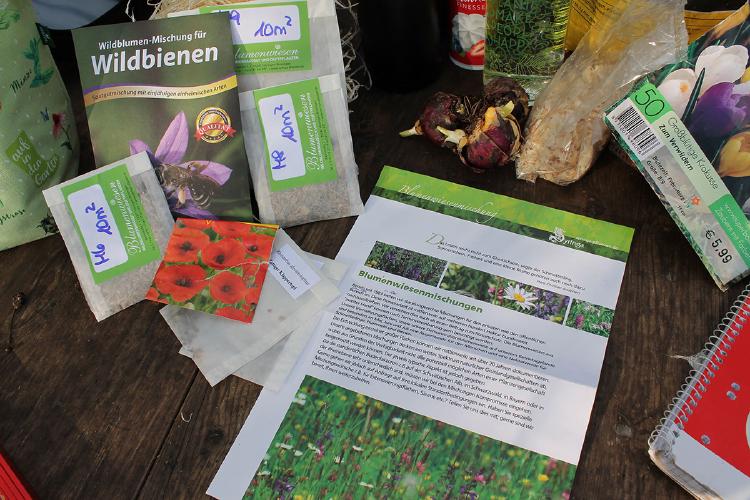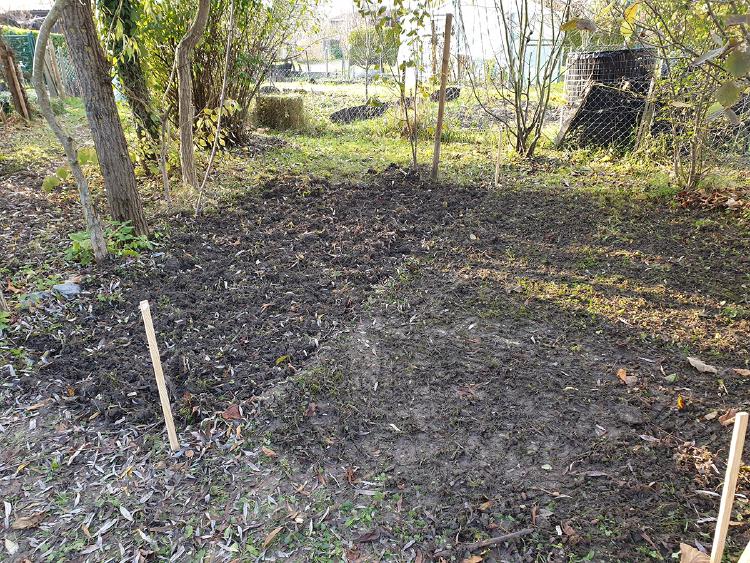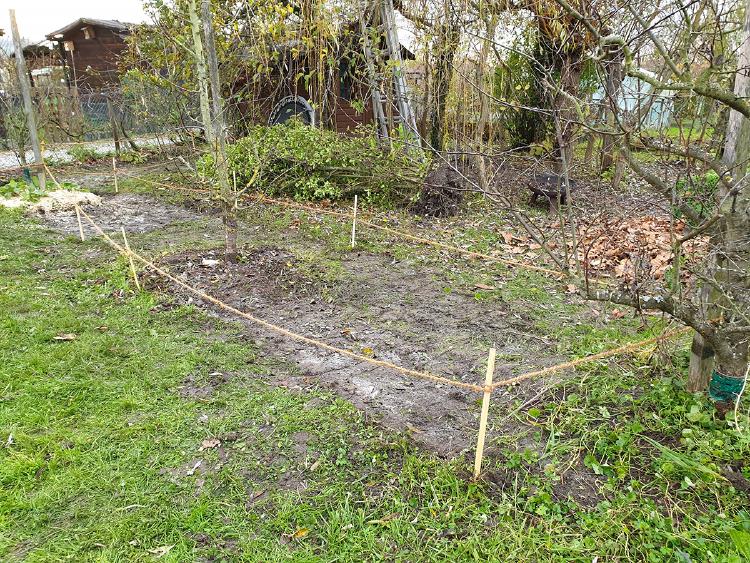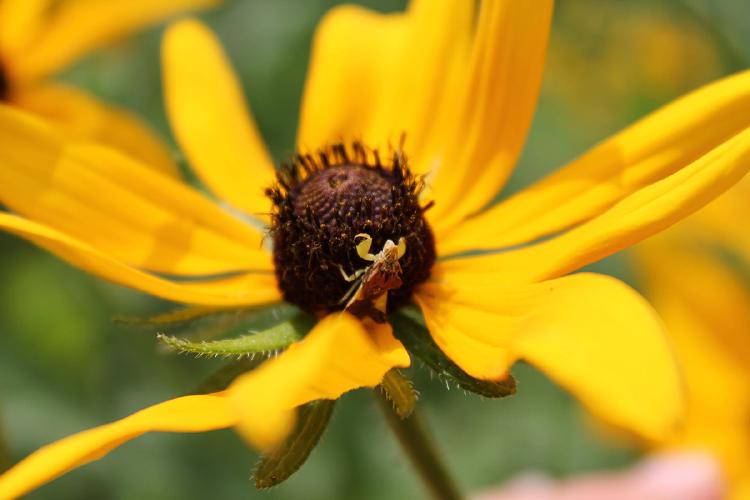
Wildflower Meadow Project
The best and worst thing about gardening is the wait. In today’s world of instant gratification many would argue it’s always the worst, but gardening is more about observing and enjoying the process rather than the end result. Unfortunately, there are projects that are oh-so-difficult to wait for. I’ve been dreaming up a wildflower meadow project since May of last year, patiently waiting for autumn to arrive in order to start it. When it finally came, the garden crew and I completed phase one of building and I find myself eagerly awaiting phase two in the spring: emergence.
There are a few exciting questions I’d like to answer about this project:
- Which of four different wildflower mixes will do best on the plot?
- Which of two sowing methods will be most effective?
- How will wildflower meadows look in a small space and will they actually be low maintenance?
- What insects and other wildlife will the meadows attract and how will they change the ecosystem of the Kleingarten?
The two main reasons we sowed wildflower meadows in small areas are to increase wildlife and to reduce mowing in the least used spaces on the plot while keeping it aesthetically pleasing. There are many small, awkward, unused spaces within the garden serving no purpose other than being empty. We could potentially transform the areas into spaces for food production but unfortunately I know we won’t have the time to properly maintain them against the aggressive weeds. For the time being we needed a useful, low-maintenance solution for these challenging spaces, so why not attract beneficial insects and wildlife to the garden?

Info page from the nursery and packets of seed mixes.
I decided to order mixes from a local nursery not only to support the local economy but to also utilize their knowledge of what grows best within the region. The mixes were chosen based on the type of soil the allotment contains and the overall goal we’d like to accomplish. The nursery could even create a specialized mix based on our soil, sun, moisture, and whatever wildlife we’d like to attract but I opted out of this in order to test their pre-made mixtures. The ones chosen were a universal, half shade, walkable grass, and wildbee mix.
The universal contains a mixture of poor-dry soil type and rich-wet soil type wildflower seed. This mixture is used to take the guessing game out of what seed will succeed, since the conditions will select which type will survive. It’s a bit of an insurance policy—if you don’t care and just want a meadow, or you misrepresent your soil conditions—the seedlings best adapted to the conditions will survive. I predict the dry-sandy soil seedlings will be out-competed by the wet-clay seedlings, but I could be pleasantly surprised that a few of the dry varieties persist. This mixture should be a success no matter what.
Half shade was chosen for the sections of the garden that contain shade. Most of the seeds in this mix are generalists tolerating any soil type from sandy loam to heavy clay so it should be a successful mix as well, though the description online states we may not see many blooms until the second year. The full glory of a meadow can be a multi-year process.

Half shade section marked out. Left is the break-up ground method; right is the soil scratching method.
The walkable grass contains multiple varieties of native grasses with a few wildflower species. The Kleingarten needs to be sown with some grass seed, since it is patchy with mud in heavily trafficked areas, so I chose this for its function as a pathway as well as a food source for native insects and wildlife. This mix’s description states it can be mowed more often, handle trampling, and recover quicker compared to a traditional meadow. If it’s successful against foot traffic, then this autumn the garden crew will help sow more grassy pathways throughout.
The last mix chosen was a wild bee mix. The nursery’s website stated that it was created in collaboration with a wild bee expert to take into account the nectar and pollen production required for bees to raise healthy brood. It’s also designed to attract multiple species of bees including silk bees, fur bees, mason bees, carpenter bees, bumblebees etc. without containing invasive species of plants. I really hope this mix is successful, though I have the feeling it will not thrive as well as the others since many of the plant species listed prefer sandy or well-draining soil. But the success of any mix is better than nothing: even if this particular mix does not survive, many bee species will still benefit from the other three types sown.

Wild bee mix packet with universal mix packet and red poppies packet in foreground. I added a few poppy seeds to the universal mix for fun.
This project also compares which of two sowing methods will be effective. Each seed packet was for 10m2 (107ft2). We roughly divided the 10m2 plots in half for each method (see half shade photo above), one hardworking method of removing sod and breaking up the ground, as recommended by the nursery’s instructions, and the other easier method of soil scratching with rakes. Soil scratching involves a few extra steps of mowing the area as short as possible, almost scalping it, then vigorously scratching the surface in a few directions with a sturdy leaf rake, then repeat the scratching in different directions with a bow rake to cut a little deeper into the ground. The goal with this technique is to weaken the grass roots without the slow backbreaking method of completely removing the sod. I have the feeling that the harder method of removing and breaking up grass will win, especially since the lawn mower is so old we couldn’t lower the deck to complete the first step of cutting the grass short for the scratching method. We did, however, add some Yellow Rattle seed to the universal and wild bee mixes to help the wildflowers compete against the grass. I only added it to two mixes because I didn’t have enough seed for all four.
Yellow Rattle is a semi-parasitic species that feeds on grass roots effectively weakening the grass to create spaces for wildflowers to grow. It’s known as the “meadow maker” and is called Yellow Rattle for the rattling sound the mature seeds make within the pods; the German name is pretty adorable too: Kleiner Klappertopf- little rattling pot.
After preparing the areas with each method, we mixed the seed with some sand to allow for even distribution and to see where we had sown since the seeds blend with the ground. Finally we took a few pieces of scrap wood, laid them over the sown areas and walked on them to press the seed into the ground for good soil contact. If your soil is dry you can lightly tread the seed with your shoes but our soil was wet and sticky on those days so we didn’t want to risk re-collecting the seeds with our boots.

Can you spot the pressed-in seed in the center?
There is an easier third method that is probably the most effective but requires time. Lay out a large black or dark colored tarp, which no light can penetrate, over the area and place heavy bricks in the middle and around the edges. Leave for five months, best a year, to kill and break down the grass. It’s important to pull the tarp fairly tight and place the heavy objects at regularly spaced intervals so the wind does not catch it and expose the plants or weed seeds to light and air.
The third thing I am interested in is seeing how wildflower meadows look in a small space and if they really are low maintenance. Most meadows I’ve seen are in vast open areas. There are a few beautiful ones nearby that are more than an acre and I am curious to see how they look and cope in a small fruit orchard allotment garden. It’s my hope that they’ll look great, be as low maintenance as they claim, and inspire someone to add a small meadow in their garden or backyard in order to help native wildlife.

The beginning stage of meadow building is not the prettiest but will hopefully pay off this season. The wild bee mix was sown between the right and middle tree; the universal mix was sown between the middle and far left tree.
The final and most exciting thing I’m interested in, what new insects and wildlife will we see next year? To be honest, I have the typical reaction towards insects: I hate when they fly around or are on me. I’ve always loved spotting them move about the garden but as soon as they take off toward me, they freak me out. I appreciate the hard work they do in our gardens of breaking down dead organic matter, improving soil fertility, pollinating our plants, and yes, even eating our plants, because those ‘pests’ we love to hate attract useful predators. And the more I’ve learned about honeybees, the more comfortable I’m becoming with insects in general. As long as they are not physically on me, I love them.

Love watching this guy posed on a black-eyed susan. If you know what insect this is, let me know on Twitter! @hereisthedill (Photo taken in Ohio garden)
There are so many fun interesting things about this project that I’ve never been more excited for spring to come. I will say I am worried that I’m getting my hopes up too much. The grass and weeds of this allotment are aggressive and if there’s one thing I’ve learned is not to set such high hopes for this space. I’ll consider it a success if we can get just a few wildflowers to stay in the battle against the weeds.

- Filed to:
- Kleingarten


